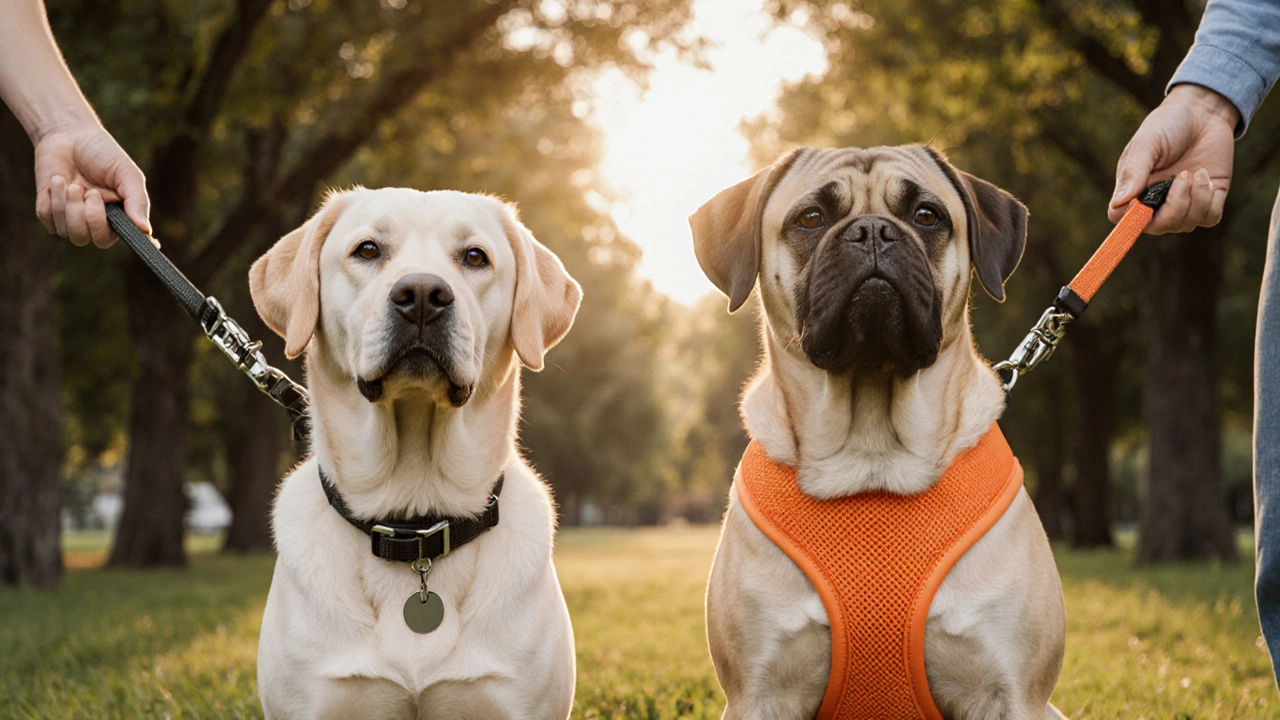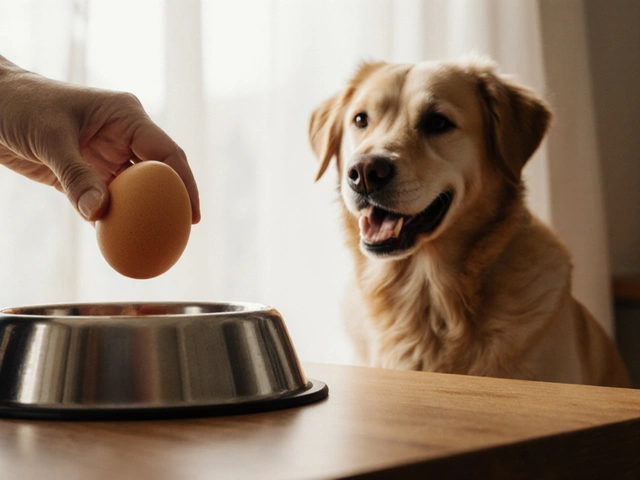Dog Harness: The Simple Way to Keep Your Dog Safe on Walks
When you grab the leash, the first thing you should think about is protection. A well‑fitted harness does more than keep your dog from pulling – it spreads pressure across the chest, protects the neck, and helps you stay in control. If you’ve ever felt a sudden yank on a collar and worried about neck injuries, you’ll get why many vets and trainers swear by harnesses.
Why a Harness Beats a Collar
Collars are great for ID tags, but they’re not designed for pulling. A strong dog can strain the neck vertebrae, cause throat injuries, or even lead to choking. Harnesses attach at the chest or front, so the force of a tug is distributed over a larger area. This means less risk of neck problems and more comfort for your pup.
Another win is training. Front‑clip harnesses turn a dog’s forward momentum into a gentle turn toward you when they pull. That little redirection is a natural way to teach loose‑leash walking without harsh corrections. Plus, most harnesses have adjust‑able straps, so they grow with a growing puppy.
How to Fit and Use a Dog Harness
Fit is everything. Start by laying the harness on a flat surface and slide your dog’s head through the neck loop. Then, pull the chest strap snug enough that you can fit two fingers between the strap and the fur. If it’s too loose, the harness will slip off; too tight, and it will chafe.
Check the fit every few weeks – puppies can outgrow a size in weeks, while adult dogs might gain or lose weight. When you put the harness on, watch for rubbing or hair loss. A good harness should feel like a light sweater, not a belt that digs in.
Once it’s on, attach the leash to the designated D‑ring. If you’re using a front‑clip model, clip the leash to the front loop and keep the leash short enough to give you quick control, but long enough for your dog to move comfortably. For back‑clip harnesses, keep the leash a bit longer; they’re better for calm walks where you don’t need immediate direction changes.
Practice indoors first. Let your dog wear the harness for short periods, rewarding calm behavior with treats. When they’re used to the feel, take a quick lap around the house, then step outside. If they try to pull, the harness will guide them back toward you, and you can reward the turn with a treat. This positive loop teaches them that walking beside you is a good thing.
Finally, keep the harness clean. Most fabrics are machine‑washable, but zip up any velcro before tossing it in the wash. A clean harness stays odor‑free and lasts longer, so you won’t have to replace it every season.
Choosing the right harness isn’t rocket science, but it does need a bit of attention. Look for durable material, easy‑adjust straps, and a secure D‑ring. Test a few styles in a pet store if you can – many let you try them on. Remember, the goal is a happy, safe dog and a stress‑free walk for you. With the right fit and a little practice, you’ll both enjoy every step of the journey together.

Dog Collar vs Harness: Which Is Safer for Walking?
Find out whether a dog collar or a harness is safer for walks, how anatomy, behavior, and breed affect the choice, and get a practical checklist.
read more
Can a Dog Wear a Collar and a Harness at the Same Time?
Ever wondered if you can keep a collar and harness on your dog at the same time? This article cuts through myths and confusion, spelling out when and how to use both safely. Get tips on comfort, safety, and training, plus advice for choosing the right gear. You'll learn what works for walks, IDs, and daily life. Perfect for anyone who wants to keep their dog safe and comfy.
read more



